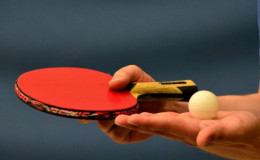 Athletics is an exclusive collection of sporting events that involve competitive running, jumping, throwing, and walking. The most common types of athletics competitions are track and field, road running, cross country running, and race walking. The simplicity of the competitions, and the lack of a need for expensive equipment, makes athletics one of the most commonly competed sports in the world.
Athletics is an exclusive collection of sporting events that involve competitive running, jumping, throwing, and walking. The most common types of athletics competitions are track and field, road running, cross country running, and race walking. The simplicity of the competitions, and the lack of a need for expensive equipment, makes athletics one of the most commonly competed sports in the world.
Types of athletics competitions
Track and field
Track and field comes in both indoor and outdoor formats, with most indoor competitions occurring in winter, while outdoor events are mostly held in summer. The sport is defined by the venue in which the competitions are held – the track and field stadium.
|
Official world championship track and field events |
|||||||
|
Track |
Field |
||||||
|
Jumps |
Throws |
||||||
|
60 m hurdles |
|||||||
Road running
Road running competitions are running events (predominantly long distance) which are mainly conducted on courses of paved or tarmac roads, although major events often finish on the track of a main stadium. In addition to being a common recreational sport, the elite level of the sport – particularly marathon races – are one of the more popular aspects of athletics.
Types of road running events:
Marathon
Half Marathon
10 km
5 km.
The marathon is the only road running event featured at the IAAF World Championships in Athletics and the Summer Olympics, although there is also an annual IAAF World Half Marathon Championships.
Cross country running
Cross country running is the most naturalistic of the sports in athletics as competitions take place on open-air courses over surfaces such as grass, woodland trails, and earth. It is both an individual and team sport, as runners are judged on an individual basis and points scoring method is used for teams. Competitions are typically long distance races of 4 km (2.5 mi) or more which are usually held in autumn and winter.
Racewalking
Racewalking is a form of competitive walking which is usually contested on courses on open-air roads, although running tracks are also occasionally used. Racewalking is the only sport in athletics in which judges monitor athletes on their technique. Racewalkers must always have a foot in contact with the ground and their advancing leg must be straightened, not bent at the knee – failure to follow these rules results in disqualification from the race.
Athletes with a disability
Athletes with a physical disability have competed at separate international events since 1952. It is governed by IPC Athletics, and is one of the sports at the Summer Paralympic Games since 1960.
Competitors at elite level competitions, are classified by disability, to arrange athletes with a similar disability in the same event. A classified T12 athlete for example, is a track athlete with a visual impairment.
F = Field athletes
T = Track athletes
11–13 – Visual impairment. Compete with a sighted guide.
20 – Intellectual disability
31–38 – Cerebral palsy
41–46 – Amputation, and others (including athletes with dwarfism)
51–58 – Wheelchair
Venues
Professional athletics almost exclusively takes place in one of three types of venue: stadiums, set courses on grass or woodland, and road-based courses.
Track and field stadia
A standard outdoor track is in the shape of a stadium, 400 metres in length, and has at least eight lanes 1.22 m in width. Older track facilities may have nonstandard track lengths, such as 440 yards (402.3 m) (common in the United States). Historically, tracks were covered by a dirt running surface. Modern All-weather running tracks are covered by a synthetic weather-resistant running surface, which typically consists of rubber (either black SBR or colored EPDM granules), bound by polyurethane or latex resins. Older tracks may be cinder-covered.
A standard indoor track is designed similarly to an outdoor track, but is only 200 metres in length and has between four and eight lanes, each with width between 0.90 m and 1.10 m. Often, the bends of an indoor track will be banked to compensate for the small turning radius. However, because of space limitations, indoor tracks may have other nonstandard lengths, such as 160-yard (146.3 m) indoor track at Madison Square Garden used for the Millrose Games. Because of space limitations, meetings held at indoor facilities do not hold many of athletics events typically contested outdoors.
Cross country courses
There is no standardised form of cross country course and each venue is significantly defined by the environment it contains – some may be relatively flat and featureless, while others may be more challenging with natural obstacles, tight turns, and undulating ground. While a small number of purpose-built courses exist, the vast majority of cross country running courses are created by cordoning a specific area within any open natural land, typically a park, woodland or greenspace near a settlement.
At the elite and professional level, courses must be looped and each lap must be between 1750 m and 2000 m in length. Severe obstacles such as deep ditches, high barriers and thick undergrowth not normally present; the course should be able to be completed whilst remaining on foot throughout. In order to maintain the sport's distinction from road running, the usage of unnatural or macadamised surfaces is generally kept to a minimum or avoided entirely.
Due to the fact that the majority of races take place on areas of grass, soil, mud or earth, weather conditions can significantly affect the difficulty of cross country courses, as snow and rain reduces traction and can create areas of standing water.
Organizations
Since its foundation in 1912, the international governing body for athletics has been the International Association of Athletics Federations (IAAF). The IAAF has 213 member nations and territories, which are divided into six continental areas (or area associations). The six association areas are for Asia, Africa, Europe, Oceania, North America and South America. The sports within athletics do not have their own independent governing bodies at either international or continental level and, instead, all fall under the athletics authorities.
AAA – Asian Athletics Association
CAA – Confederation of African Athletics
CONSUDATLE – South American Athletics Confederation
NACACAA – North America, Central America and Caribbean Athletic Association
EAA – European Athletics Association
OAA – Oceania Athletics Association
National level athletics organisations are responsible for the regulation of the sport within their respective countries and most major competitions have some form of permit or approval from their national body.
International championships
Olympic Games
The modern Summer Olympics was the first event at which a global athletics competition took place. All the four major sports within athletics have featured in the Olympic athletics programme since its inception in 1896, although cross country has since been dropped. A total of 47 athletics events are held at the Olympics, 24 for men and 23 for women. The events within the men's and women's programmes are either identical or have a similar equivalent, with the sole exception being that men contest the 50 km race walk.
Paralympic Games
The Summer Paralympics include athletes with a physical disability. Track and field and road events have featured in the Paralympic athletics programme since its inception in 1960. The Paralympic competition is the most prestigious athletics contest where athletes with a physical disability compete.
Athletics at the Paralympic Games also include wheelchair racing where athletes compete in lightweight racing chairs. Athletes with a visual impairment compete with a sighted guide.
World Championships
The IAAF World Championships in Athletics is the primary global athletics championships held by IAAF. The biennial competition was first held in 1983 and now features an event programme which is identical to the Olympics. Thus, road running, racewalking and track and field are the sports which feature at the competition. Cross country running has its own discrete global championships – the IAAF World Cross Country Championships – which has been held annually since 1973. The IAAF World Indoor Championships in Athletics is a biennial athletics championships, which features solely indoor track and field events. The foremost separate road running event is the annual IAAF World Half Marathon Championships. Other world championships include the IAAF World Junior and World Youth Championships in Athletics, which are for athletes under-19 and under-17, respectively.
Commonwealth Games
Athletics is one of the sports at the quadrennial Commonwealth Games competition. It has been a Commonwealth Games sport since the inaugural edition of the event's precursor.










